How Experts Grow Lithodora: ‘I Plant Glandora So It Trails Down Free-Draining Slopes’
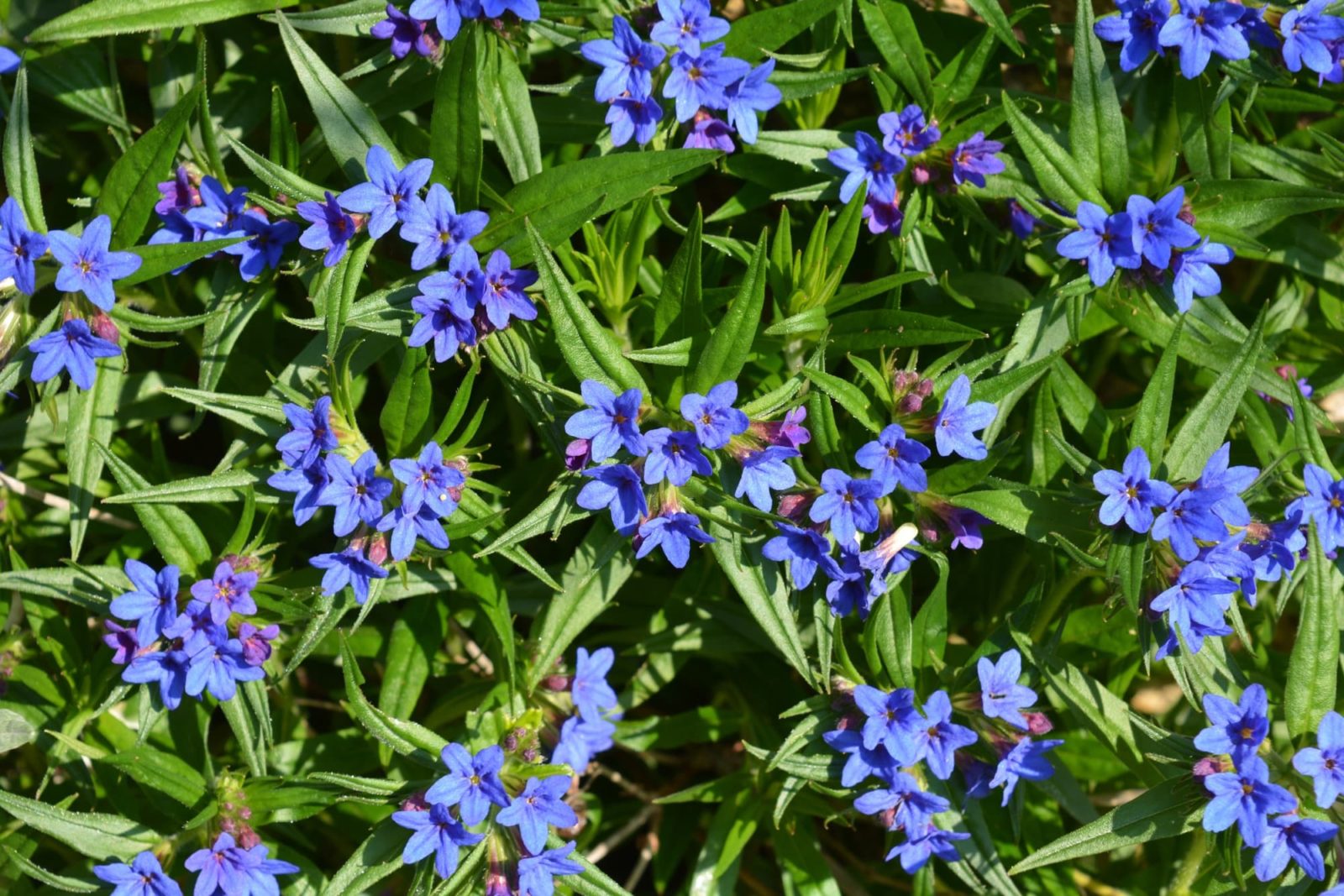
ALPINES > LITHODORA
Reviewed By COLIN SKELLY

Colin is a Horticulturist and Horticultural Consultant with experience in a range of practical and managerial roles across heritage, commercial and public horticulture. He holds the Royal Horticultural Society’s Master of Horticulture award and has a particular interest in horticultural ecology and naturalistic planting for habitat and climate resilience.
Bewitch your guests with otherworldly tones of blue seen only in Lithodora flowers.
These compact and low-growing evergreens produce their riveting blue flowers in profusion, with the blooms getting underway before summer and quite often finishing in the autumn!
Otherwise a nondescript little shrub with a prostrate, trailing habit, Lithodora is exceptional to the point of uniqueness in its flowers’ bewitching blue tones and shades.
This very special plant’s dazzling azure blue blooms will lend an almost otherworldly charm to your garden.
Overview
| Botanical Name | Lithodora diffusa |
| Common Name(s) | Gromwell / Scrambling Gromwell |
| Plant Type | Perennial Shrub |
| Native Area | Spain |
| Hardiness Rating | H5 |
| Foliage | Evergreen |
| Flowers | Small, star-like, salver to funnel-shaped flowers with 5 petals in tones of blue |
| When To Plant | April to May |
Sunlight
Preferred
Full sun
Exposure
Exposed or sheltered
Size
Height
0.1 – 0.2M
Spread
0.2 – 0.3M
Bloom Time
May to August
Soil
Preferred
Sand, chalk, loam
Moisture
Well-drained
pH
Acidic to neutral
Though the name Lithodora relates to a genus, the name is commonly and quite often used for the species Lithodora diffusa and its cultivars.
Making things a little more complicated, of late this plant has become Glandora diffusa after being reclassified.1Glandora diffusa. (n.d.). Kew Royal Botanic Gardens. Retrieved September 19, 2023, from https://powo.science.kew.org/taxon/urn:lsid:ipni.org:names:77088628-1

Whatever you call it, this evergreen shrub has a way of further intensifying its standout blue flowers.
It is very floriferous, producing those blooms in large numbers across a long flowering season from late spring to the end of summer, sometimes lasting until the start of autumn.
In open ground, they are fantastic for edging and rock gardens.
“I typically plant Glandora diffusa so it trails down free-draining slopes or over the top of walls in full sun conditions,” shares Master Horticulturist Colin Skelly.
“They are quite tolerant of wind, so are suitable for coastal locations. Once established, they make great ground cover for low-maintenance planting.”
As for containers, they are best suited for wide planters and are ideal for balcony boxes.
Commonly Grown Types
Lithodora or Glandora diffusa cultivars vary little in plant characteristics as they all descend from the same species.
As the only variable attribute of significance is flower colour, that is what is highlighted underneath.
The species plant’s flowers are of a fully saturated mid-blue to chalky-blue tone.
On some plants, petals display a longitudinal white band.
‘Heavenly Blue’ is the most popular and commonly grown cultivar.
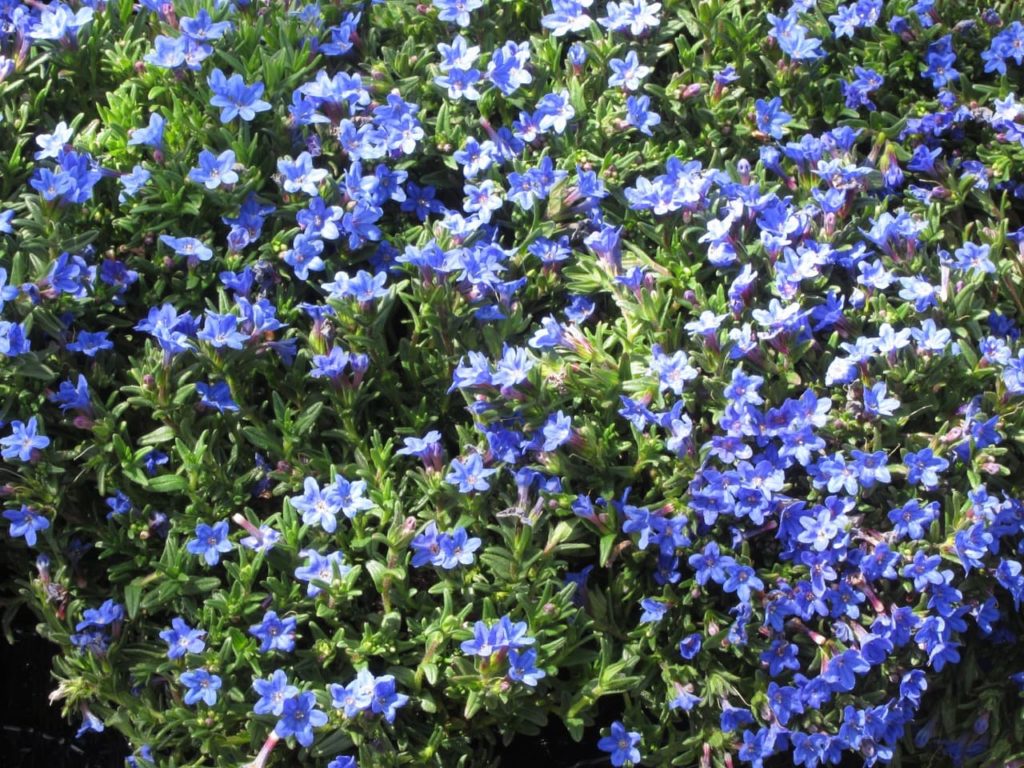
Its flowers are of a deep, lustrous blue tone, often with purple tinges.
It has received the RHS Award of Garden Merit.
‘Helen Ward’, another RHS AGM winner, has equally popular flowers that are of an intense purplish azure.
‘Blue Star’ has bi-coloured flowers.
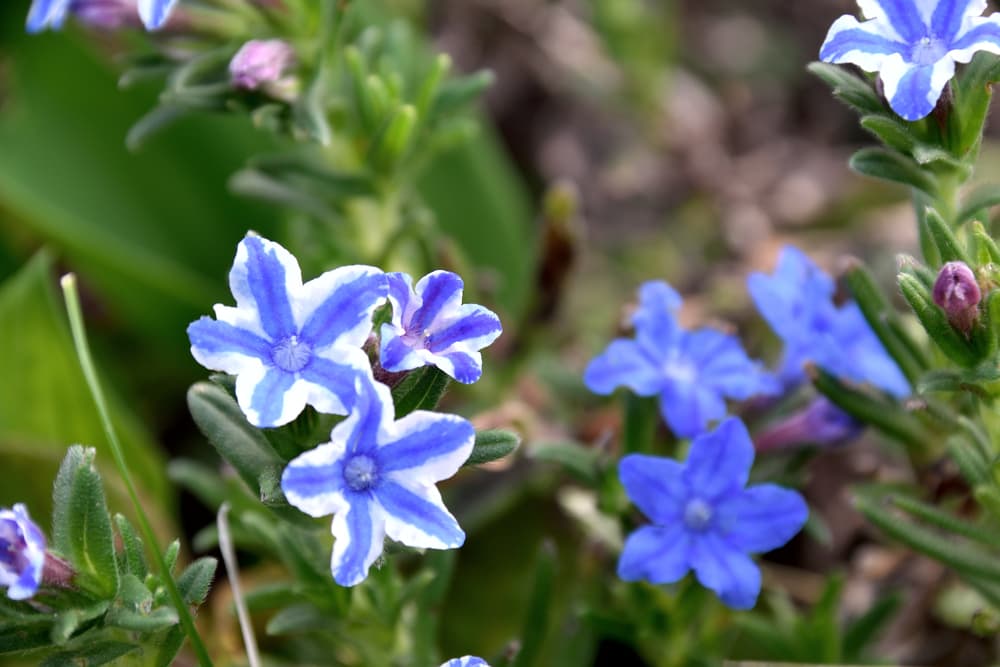
The central longitudinal part of each petal is an unusual tone of blue that is light yet saturated, and the sides of each petal have a thick, white border, resembling a star!
How To Grow Lithodora
A well-drained, fertile, sandy loam suits these plants best, whilst clayey, heavy and lime-oriented soils should not be used.
Soil should be friable and must not have stones or clods in, so tilling it before planting may be necessary.
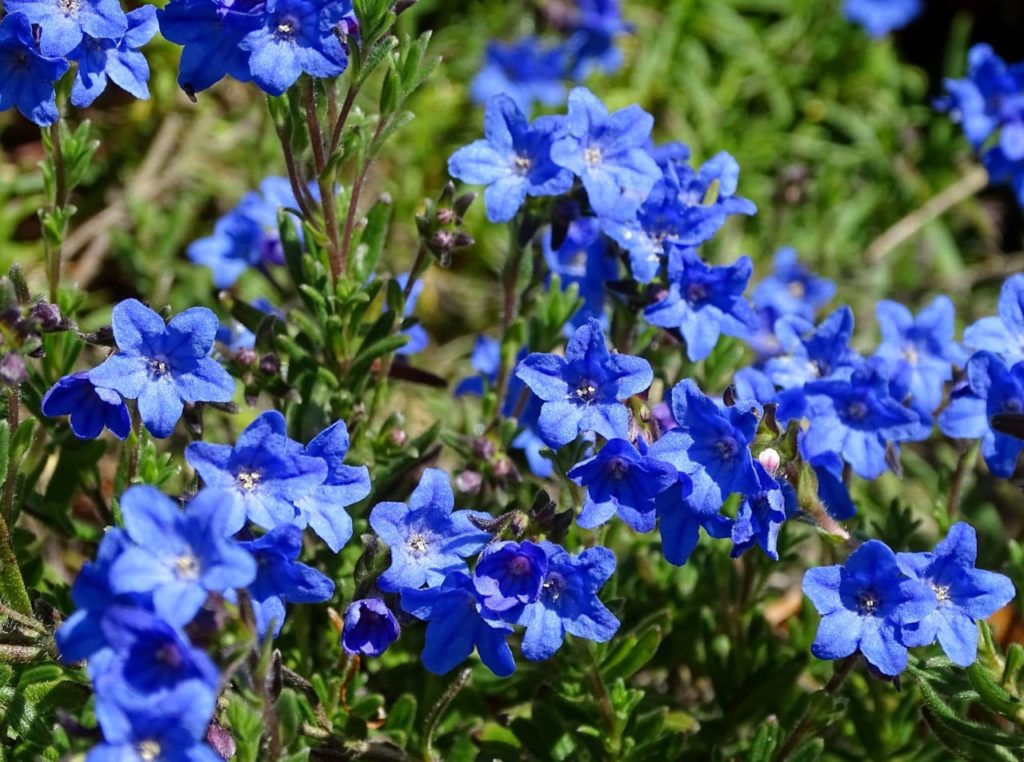
If your garden soil is sandy, you could mix in humus in a 1:3 ratio or organic compost in a 1:4 ratio and amend with grit or perlite to ensure good drainage.
Sunlight & Temperature
While Lithodora has no aspect or exposure requirements, it does require a position in full sun.
However, these evergreens do not tolerate hot, humid conditions very well.
Though they have a hardiness rating of H5, this rating is deceptive, as it is best if the temperature stays above freezing, especially for young plants.
Although freezing temperatures and frost may not outright kill the plant, the shoots and foliage of the plant might suffer some damage.
Propagation
Lithodoras are fairly easily propagated by semi-ripe cuttings, which is best attempted in the August to September timeframe.
Water the plant in the early and late morning before taking a cutting of 10-15cm in length.
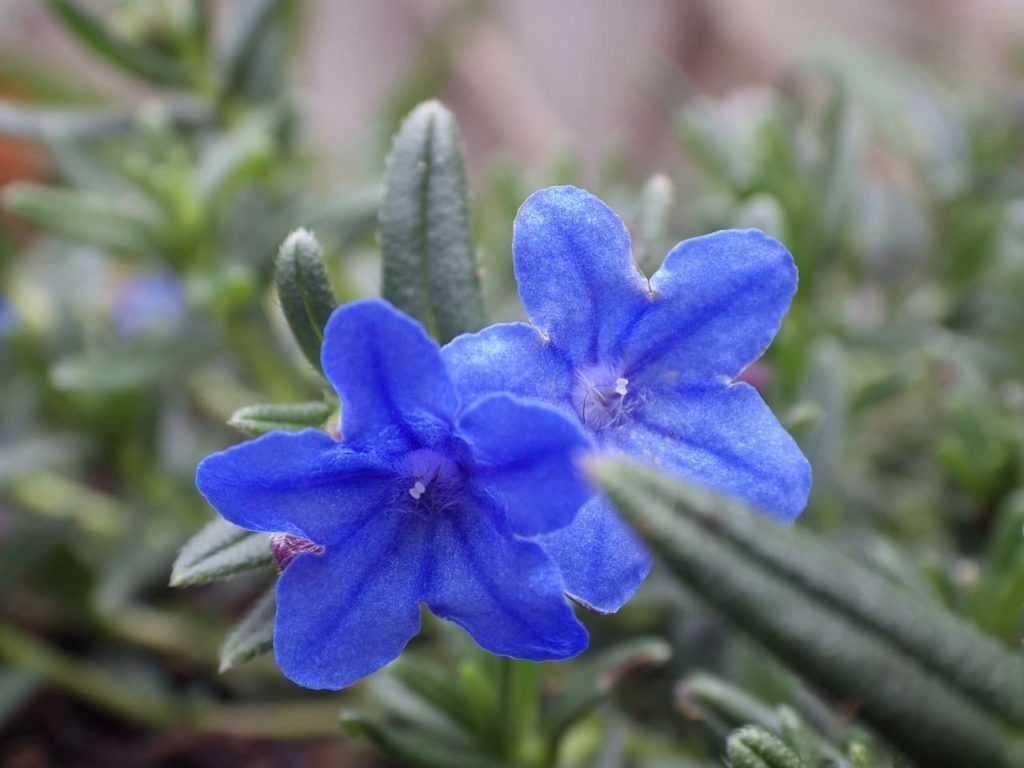
The cutting should be from a shoot that is the current year’s growth, which will be fresh and green for most of its length but become grey-brown and woody near the base.
Make the cut just under a node with a sharp pair of sterilised secateurs, then strip all but 3 of the leaves.
Insert the cutting to a quarter of its length in cuttings mix or a well-draining, light, sandy medium and dampen daily.
Planting
You may wish to transplant a container-bound Lithodora into open ground or, considering that these plants spread, you may need to pot up a plant.
The best time to transplant or pot up a Lithodora is mid-late spring, usually during April or May.
Make sure that the plant is set in its new home at the same soil line that it was at in the original pot.
Lithodora Plant Care
Watering
Watering Lithodras is probably not as straightforward as watering most other evergreen shrubs.
From mid-spring until about mid-autumn, these plants should be watered well, but overwatering is to be avoided at all costs.
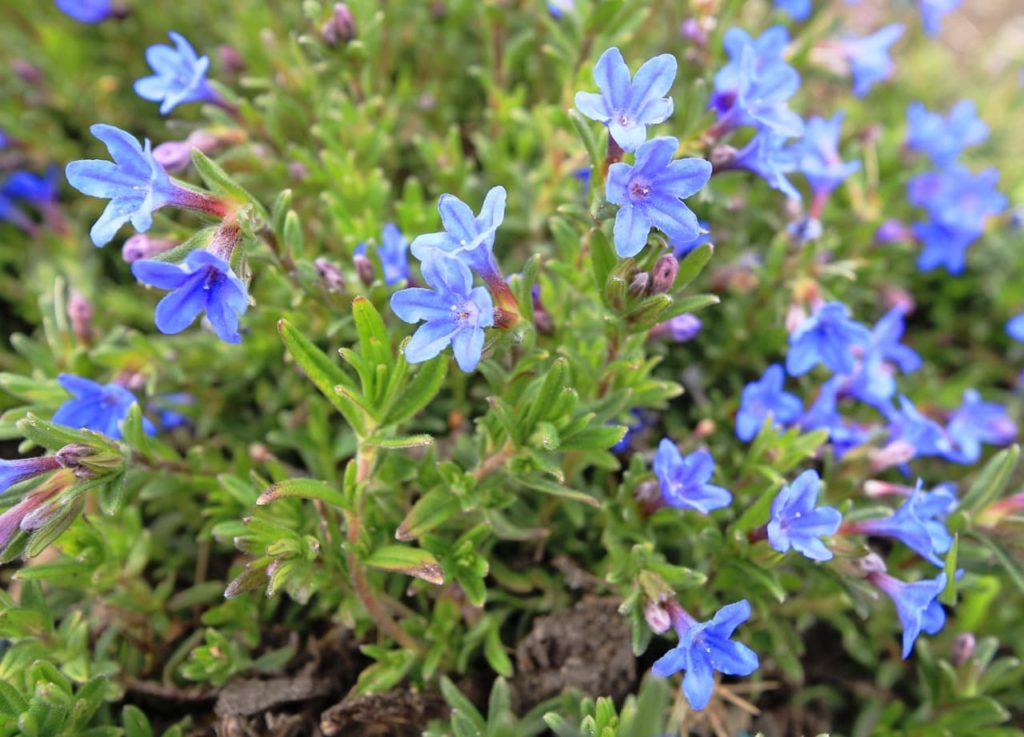
Water well, though not deeply, and allow the soil to dry out before watering again.
The soil should not be kept continuously moist, nor should it be allowed to stay dry for more than a day or so.
Although watering should be reduced during winter, especially if a container-bound Lithodora is moved indoors, it should still continue.
Feeding
Though it is not necessary to fertilise Lithodora, doing so will certainly improve its performance.
You may fertilise annually in April from the second year onward.
Do not work granules or powder into the soil.
Use a liquid feed that is either readymade or one that you have prepared yourself by dissolving soluble granules or powder.
Choose an ericaceous formula meant for flowering shrubs.
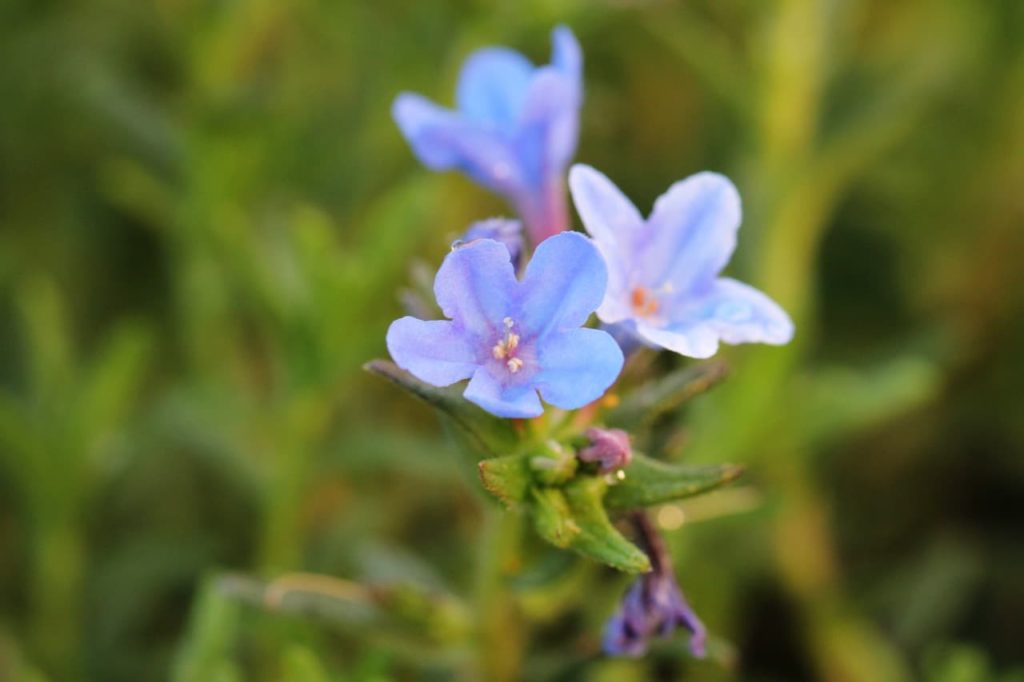
Whichever fertiliser you use, dilute it to 50% of the strength recommended by the manufacturer.
Pruning
This little evergreen requires no pruning, but if it does, Lithodora ought not to be pruned in autumn, at least in the UK, because it needs all its foliage to stay cosy during the winter.
Any necessary pruning should be done in April, about 10 days after the last frost.
You may wish to lightly trim the longer branches for compactness and to encourage bushier growth.
Otherwise, the only pruning that may be necessary is to remove dead or diseased branches or to trim an overgrown or straggly branch.
Overwintering
Although Lithodoras are hardy to H5, I would provide them winter protection in the UK, unless you live around the southern coast curve of the country.
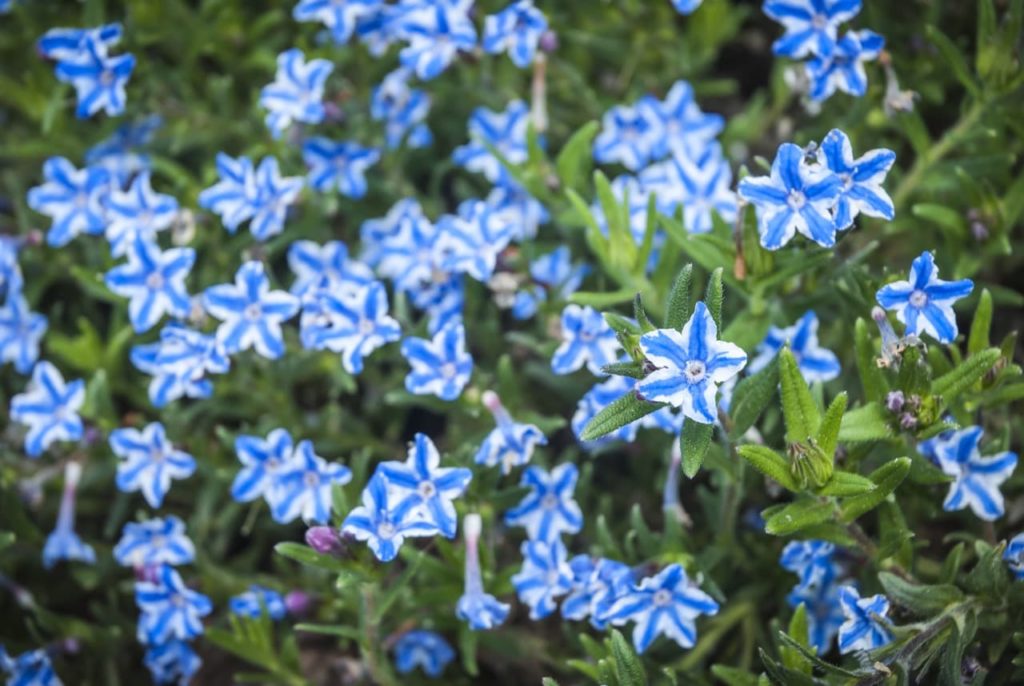
When the temperatures drop down into the single digits, apply a 8-10cm layer of mulch – humus or leaf mould would be perfect.
Leave a ring of several centimetres around the main stem.
If you anticipate a hard frost or sub-zero temperatures, lay horticultural fleece over the plant between the evening and mid-morning.
If the plant is in a container, all you need do is bring it indoors and place it by a south-facing window.
As long as the plant gets a few hours of direct sunlight during the winter, it will be content.
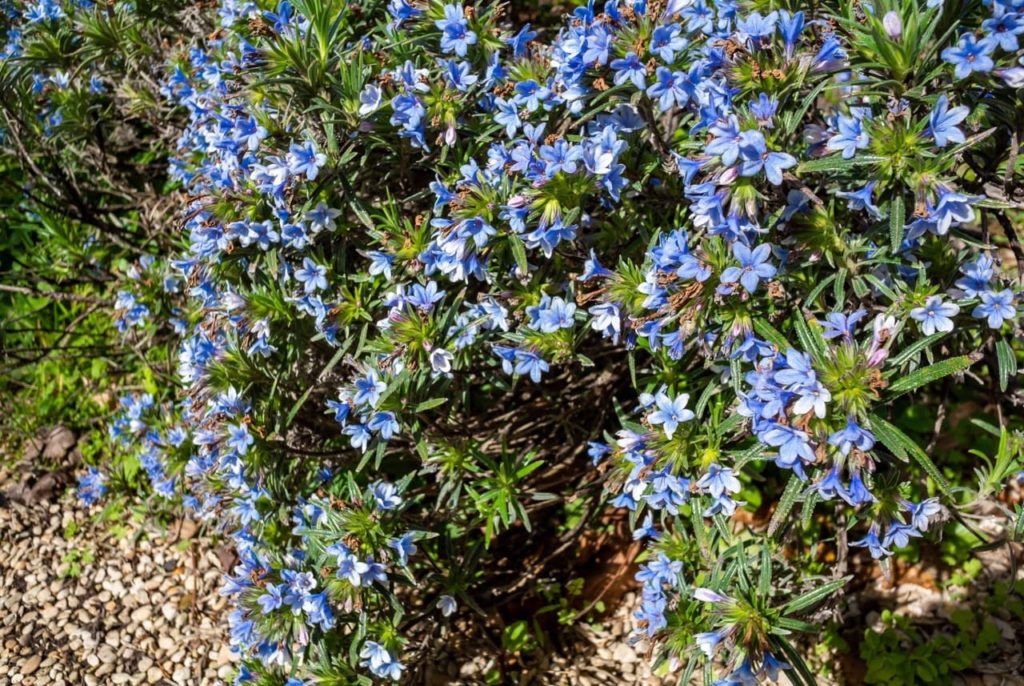
Common Problems
This wonderful shrub is mainly pest-resistant and disease-free in the UK.
References
- 1Glandora diffusa. (n.d.). Kew Royal Botanic Gardens. Retrieved September 19, 2023, from https://powo.science.kew.org/taxon/urn:lsid:ipni.org:names:77088628-1

